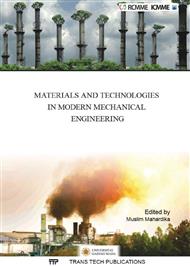p.423
p.430
p.435
p.445
p.453
p.457
p.461
p.467
p.473
Determination of Lead Contamination in Urban Soil, Yogyakarta City, Indonesia
Abstract:
Lead (Pb) is one of common heavy metal that has been shown to be very useful tracers of environmental pollution. The consequences of urbanization process can cause not only economic growth but also negatively impact on the quality of water and soil. Therefore the objective of this research is to know the potential contamination of lead in soil of urban area. The soil samples were conducted by batch leaching experiment. In surface soil, lead in soil of Pakem area varies from 2.01ppm to 5.13 ppm with average value of 3.02 ppm and Merapi area ranges from 1.84 ppm to 3.41ppm with average value of 2.42 ppm. In urban area, lead varies from 4.18 to 14.88 ppm with average of 9.93 ppm. Lead in urban soil is higher than Pakem and Merapi soil. The potential contamination of lead in urban soil is occurred with respect to urbanization and human activities. The value of lead is shown with the average of 3 ppm for Caturtunggal, Depok District, 6.53 ppm in Mantrijeron District and 9.82 ppm for Kotagede District in Yogyakarta city. The result of lead distribution in Kotagede District is the highest concentrated and it is followed by Mantrijeron District and Caturtunggal, Depok District.
Info:
Periodical:
Pages:
473-477
Citation:
Online since:
June 2016
Keywords:
Price:
Сopyright:
© 2016 Trans Tech Publications Ltd. All Rights Reserved
Share:
Citation:


